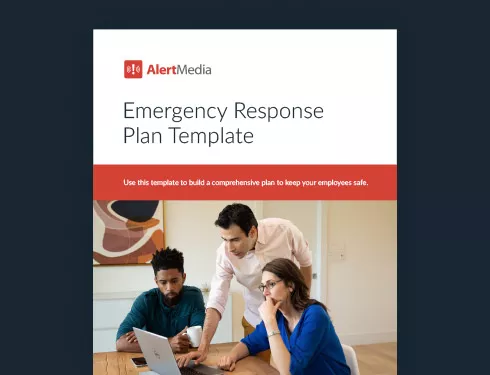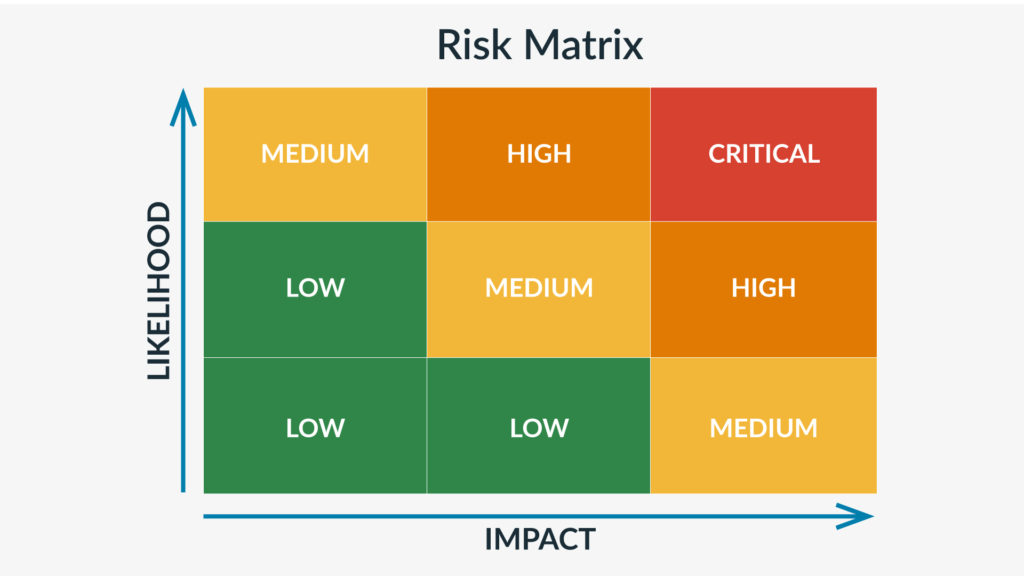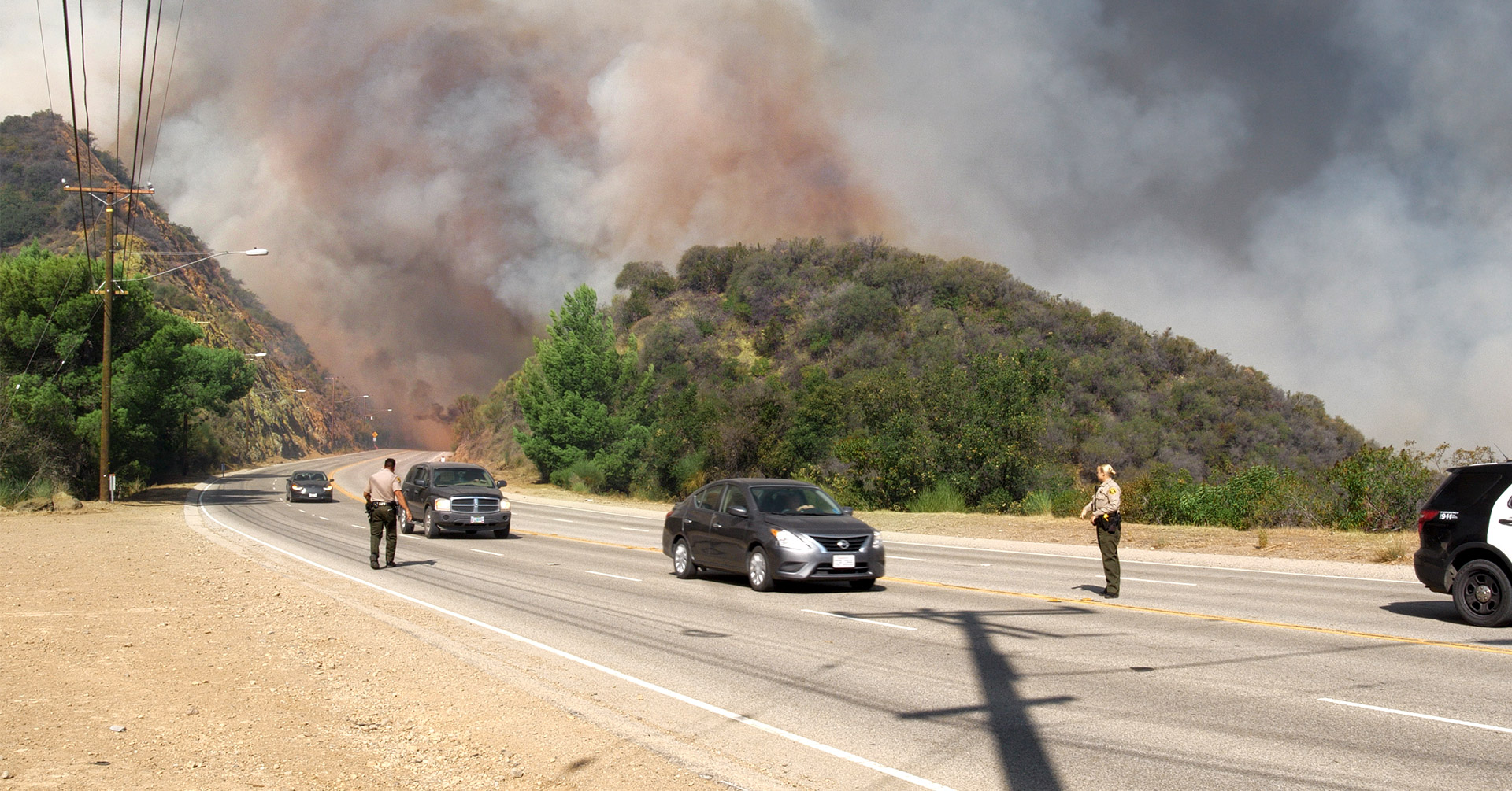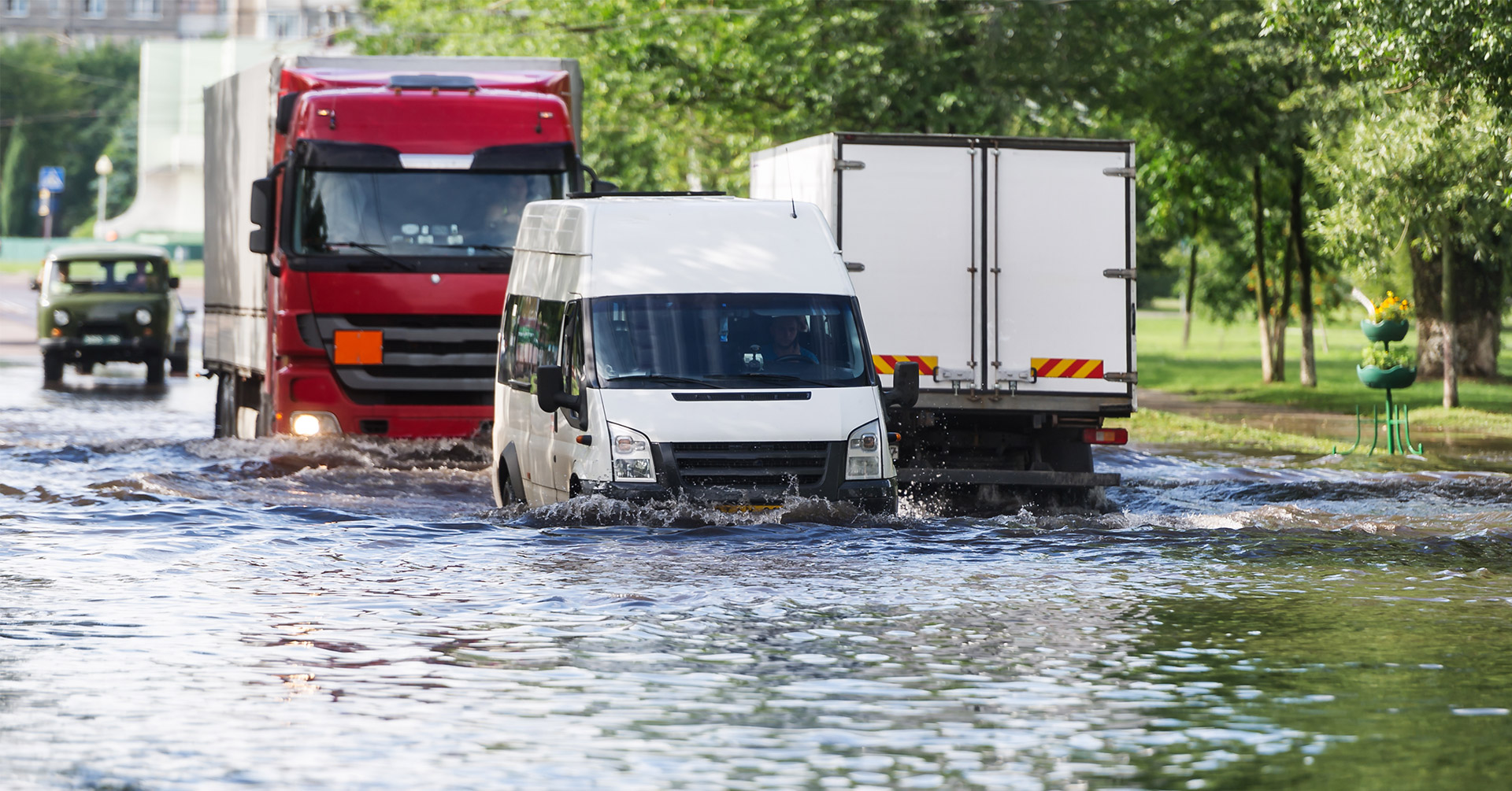
Business Power Outage Emergency Response Planning in 7 Easy Steps
Power outages can be devastating events that last anywhere from a few hours to days on end. But you don’t have to accept your fate as an idle business. With a power outage emergency response plan, you can mitigate these disruptions and keep your organization moving.

Every year, the U.S. electrical grid experiences thousands of interruptions that cut off service to customers, including many businesses that rely on the grid to continue operations. From financial losses and productivity gaps to compromised customer trust, the impact of an unexpected power outage can be severe. In fact, according to the U.S. Energy Information Administration, U.S. businesses lose billions of dollars a year due to electric power outages. And while 44% of these are still due to environmental effects like weather, according to Ready.gov, we’ve seen a recent increase in unpredictable domestic terror attacks on power infrastructure, making it crucial for safety leaders to prioritize power outage preparedness.
You won’t get very far if you wait until the lights go out to start preparing for a power outage; mitigating a power outage requires planning ahead, making a plan, gathering the resources, and knowing when to activate it all. But not to worry, here’s what you need to do to make sure that your organization doesn’t shut down when the grid does.
Emergency Response Plan Template
7 Steps to Create Your Power Outage Emergency Response Plan
The best way to start preparing for a power outage is to develop a power outage emergency response plan. Similar to a crisis management plan, this document will help you determine who to enlist, what their responsibilities should be, the resources they’ll need, and more. In your plan, include the following steps.
Step 1. Identify threats
Before preparing a response strategy, you must understand the threats you might encounter. The exercise best suited to understanding the range of risks your business faces is called a risk assessment, AKA a business threat assessment. It is an indispensable framework for evaluating risks in any part of a business, not just those related to power outages. But we’ll just be focusing on power outages today.
A power outage is a unique threat in that it has variable causes. Therefore, it’s important to assess the risks on two levels:
- What are the potential threats that could lead to a power outage?
- What are the various risks that arise for your people and your business in the event of an outage?
| Potential Threats Leading to Power Outages | Potential Threats That Arise from Power Outages |
|
|
Once you’ve identified the potential threats, you can then rate them according to their relative severity and likelihood. Then you can plot them on a “threat matrix” grid to give you an easy visual representation of your threat landscape, guiding your preparedness efforts. For example, you’ll likely want to prioritize preparation for threats that are both highly likely to occur and with high impact on your business.

As you might imagine, one organization’s risks of power outage may vary significantly from another organization’s because of business structure, the vulnerability of a particular area’s power grid to weather disruptions, or even its susceptibility to targeted attacks on power delivery systems. The best way to keep all this information straight is to use a threat assessment template to ensure that you think of everything.
Step 2. Gather contact information
The most essential part of emergency management is communication. After all, if you can’t communicate, there may be people who remain in the dark about the outage—especially if you have distributed employees and vendors or customers who might also be impacted. And you can’t communicate if you don’t know how to reach the right people, so dedicate a section of your response plan to emergency communication. Ensure you have multiple ways of reaching your employees, from phone calls and text messages to email and mobile app notifications. Remember to include phone numbers for local resources like the police, fire department, EMS, and local news to help you stay connected and supported by your community.
Step 3. Build an emergency response team
Creating an emergency response team is vital to efficiently handle a blackout. Begin by appointing a designated leader who will oversee the implementation of the plan. This leader should possess strong decision-making skills and the ability to remain calm under pressure. Additionally, identify key roles and responsibilities within the team, such as personnel responsible for communication, safety, equipment, and facilities. The exact roles your company might activate during a power outage emergency response plan may differ, but these are the most common:
- Incident commander – You can think of this person as the CEO of your emergency response. Their responsibility is to oversee the entire operation and ensure everyone else is doing their jobs.
- Evacuation route guides – In the event of a power outage, anyone in a dark workplace needs to be led to safety. Designated guides should be equipped with flashlights and reflective vests to help aid evacuees.
- Communication commander – This person oversees the emergency mass notification system and keeps everyone in the know.
- Energy leader – This person’s job is to repair or restore the supply of power to electrical equipment, even if only in a limited way. Depending on your organization’s plan and resources, this person will be in charge of emergency lighting, emergency generators, battery distribution, or setting up a secondary workplace in a location with power.
Step 4. Take stock of resources
Power outages are fundamentally a question of resources and infrastructure. In order to plan for outages effectively, you must know what alternative resources you already have on hand. Questions to ask yourself include:
- Do you have backup generators?
- If so, what is their wattage capacity?
- How many systems and devices could they run?
- Does your workplace have battery-powered emergency lighting?
- Do employees have personal flashlights or other illuminators?
- Depending on your climate, what heating, cooling, and air filtration options would you have without grid power? Do you have natural gas-based heating?
- What emergency supplies, like food, drinking water, and first aid kits, do you have available?
Pro Tip: Utility companies recommend not only preparing for power outages, but also for extreme temperatures that can accompany them. Teach heat safety and cold weather safety in tandem with power outage preparedness.
Step 5. Formulate and document the emergency plan
Now comes the fun part: devising the strategy you’ll use to respond to power outages. This can be broken down into a few sub-steps:
1. Prepare a comprehensive checklist of essential steps
Outline the specific tasks and procedures required to mitigate the impact of a power outage on your business. Include actions such as identifying critical equipment, establishing emergency power sources, and implementing communication protocols.
2. Outline procedures for immediate response and prioritization
Define the steps to be taken immediately after a power outage occurs. This may involve shutting down non-essential systems or those that would automatically restart upon receiving power, securing sensitive data, and activating backup power sources.
3. Address employee safety and evacuation protocols
Develop protocols to ensure the safety and well-being of your employees during a power outage. Establish evacuation procedures, designate assembly areas, and provide training in emergency response protocols, especially related to public safety issues like avoiding downed power lines. Plan to install battery-powered emergency lighting to allow for safer navigation in the dark and ensure your first aid training regimen is up to date. Test CO meters to prevent carbon monoxide poisoning. Ensure that fire protection measures like extinguishers and sprinklers are in working order, as some of the issues that cause power outages can also start fires, like shorted electrical circuits.
4. Establish protocols for backup power and generator usage
Determine the capacity and requirements for backup power sources, such as generators. Create guidelines for their installation, operation, and maintenance.
5. Devise a communication strategy
Establish a communication strategy to keep employees, customers, and stakeholders informed during power outages. Utilize multiple channels, such as text messages, emails, and social media, to relay updates and instructions. You can even use your emergency response plan to write out message templates, saving time during an emergency.
6. Document the plan and ensure it’s accessible
Create a detailed document that includes all aspects of your power outage emergency response plan. Make sure it is easily accessible to all relevant parties, both digitally and in physical form. You’ll need to make sure safety leaders, department heads, and other company stakeholders have a copy of this plan and have a chance to sign off on it.
Step 6. Test the response plan and train your employees
Developing a plan is only the first step. Regular emergency drills and simulations are essential to test the effectiveness of the response plan. Conduct these exercises to identify any gaps or areas for improvement. Additionally, train designated employees in their roles and responsibilities on the emergency response team. This training will ensure a smooth plan execution during actual power outage situations. Regularly review and update the plan based on lessons learned from drills and real-world events.
Pro Tip: A great low-cost way to practice your power outage emergency response is with tabletop exercises.
Step 7. Plan for post-outage recovery
After any short or extended power outage, swift recovery is essential to minimize further disruptions. Take the following steps:
- Assess damages and losses: Evaluate the impact of the power outage on your business. Assess personal injuries, physical damages, financial losses, and any potential data breaches or compromised systems.
- Restore operations and infrastructure: Develop a step-by-step plan for restoring operations and infrastructure. Prioritize critical systems and equipment to minimize downtime and initiate repairs or replacements as necessary.
Power Outage Preparedness Year-Round
Since power outages can occur unexpectedly, implementing year-round power emergency preparedness measures is crucial. Consider the following actions:
- Maintain backup power sources and generators: Regularly inspect and service backup power sources and generators to ensure they are in optimal condition when needed. Develop a maintenance schedule and perform routine checks on all backup equipment.
- Stock up on emergency supplies: Keep a stock of emergency kits full of essential emergency supplies such as flashlights, batteries, first aid materials, and non-perishable food items. Ensure these emergency supply kits are easily accessible to employees during power outages. Check their contents annually to ensure they’re topped up and the items are in good condition.
- Establish relationships with local utility providers and emergency services: Foster relationships with local utility providers and emergency services. They can provide valuable support and updates during power outages, helping your business navigate challenging situations more effectively.
- Accommodate remote work: For workers who spend most of their time behind a computer, continuing work can be as simple as bringing their laptop home or to another location. Even if your workers usually come to an office every day, consider supplying them with laptops they can take with them (as well as proper IT protections to avoid gaps in your network security) so that their work isn’t tied to the office’s power supply.
On the flip side, AlertMedia customers have reported that keeping in touch with remote employees during power outages can be challenging without the proper tools. Ensure you have an emergency mass notification system that can send multichannel notifications—that is, across multiple mediums, like voice call, text, email, desktop alerts, and more.
Review and Improve
It doesn’t make sense (or money) to make the same mistake twice. Power outages provide valuable lessons that can inform future preparedness efforts. Here’s how you make sure each power emergency you face is less impactful than the last:
- Document lessons learned: Analyze the performance of your power outage emergency response plan following each power outage event. Identify areas of improvement and make necessary adjustments to enhance preparedness for future incidents.
- Update the plan based on new information and technologies: Incorporate new information, technologies, and best practices into your power outage emergency response plan. Stay up to date with industry standards and advancements to ensure the plan remains effective and relevant.
- Share knowledge and best practices: Foster a culture of continuous improvement by sharing knowledge and best practices within your organization. Encourage employees to contribute their insights and ideas to enhance the power outage emergency response plan.
Fight (for) the Power
In today’s unpredictable world, power outages pose significant risks to businesses. By prioritizing preparedness and developing a comprehensive power outage emergency response plan, companies can minimize disruptions, protect their employees, and maintain essential operations. Implementing proactive strategies, conducting regular drills, and fostering a culture of continuous improvement will ensure your business is ready to handle power outages effectively and emerge stronger from such events.

![6 Steps to Creating an Effective Emergency Response Plan [+ Template]](https://www.alertmedia.com/wp-content/uploads/2023/10/Blog-Emergency-Response-Plan.webp)


